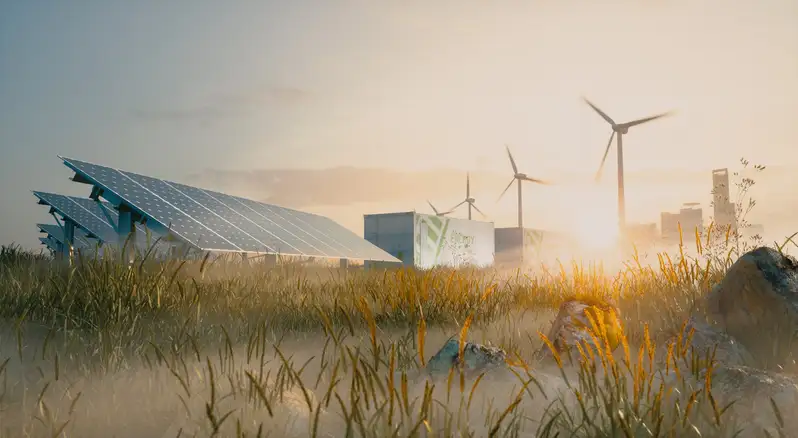Renewable energy sources have proven their superiority to traditional fossil fuel-derived sources in a number of ways: All renewables emit exponentially fewer greenhouse gases than fossil fuels, and all have key parts to play in long-range plans for controlling climate change. Each type continues to support a wide and growing variety of jobs worldwide, and each has attracted notable investment from governments and individuals. And each help strengthen the national security of the United States, since renewables lessen dependence on imported fuels.
Additionally, recent technological advances have significantly brought down the costs related to the manufacture, installation and operation of renewable energy sources.
Yet renewables also present their fair share of challenges. Here is a look at the pros and cons of four sources of renewable energy.
1. Wind Power
Advantages
Wind power, delivered through the action of wind turbines, is among the most widely used and fastest-developing sources of renewable energy. It is also one of the greenest and most effective in terms of building out the energy grid in a sustainable way. According to a study released in 2021 by the Environment America Research and Policy Center, offshore wind farms hold the potential to supply 90 percent of the country’s energy needs by the year 2050.
Moreover, because they require no fossil fuels for their day-to-day operations, wind turbines produce no particulate matter, greenhouse gases or other pollutants, and are therefore considered a zero-emission energy source.
Wind power installations are relatively simple and inexpensive to construct and to operate. After factoring in associated production tax credits, wind power from large-scale land-based installations costs a maximum of 2 cents for each kilowatt-hour. The energy produced by wind farms is sold at a fixed price, and over a long time span (typically more than two decades). Given this system, the build-out of wind power can help create a more stable electricity economy than fossil fuels have given us.
In the United States, the wind energy sector sustains more than 100,000 jobs, with technician positions in the industry currently among the fastest-growing of all job types in the country. Wind power attracts major new American business investments, totaling more than $10 billion in one recent year. As is the case with solar farm installations, working conditions in wind farms are typically much safer than those in traditional energy sectors.
Disadvantages
Unless captured within storage batteries–now standard practice in wind farms to allow for off-peak times–the availability of wind power is entirely dependent on the weather.
Additionally, the manufacture of wind turbines and their components does require energy that may derive from fossil fuels, although when considered over the useful lifetime of a wind turbine, that amount is negligible.
In recent years, a number of people have objected to wind farm installations on the grounds of noise, esthetics and their propensity to inadvertently kill birds. Environmentalists note that wind turbines can also contribute to diminishing biodiversity in a region due to their displacement of birds, bats and other species from habitats and nesting areas.
2. Solar Power
Solar power’s advantages and disadvantages are analogous to those inherent in wind power.
Advantages
Even on an overcast day, solar panels are still able to capture some degree of energy, although high-sunlight locations will generate far more power than sites that experience more cloudy days.
Solar energy also is responsible for a large and growing segment of the job market, both in the United States and around the world. And both wind and solar are becoming increasingly attractive as investments, due to steadily declining costs as supporting technologies become more sophisticated and accessible.
Unlike industrial-scale wind turbines, which typically need to be installed offshore or in relatively remote areas, solar panels can be installed virtually anywhere. In fact, they can work successfully in almost every location in the world.
Although the amount of solar power generated is dependent on how much the sun is shining on any given day, solar power can also be stored long-term in batteries.
Disadvantages
Until recently, the main disadvantage of solar power was its high cost of installation and its long wait for return on investment. New developments in the industry have, however, made these costs and timetables much more manageable.
Like the wind power industry, manufacturing of solar components does generate some degree of pollutants. But solar collection panels typically last for decades and are nearly maintenance-free, making them an excellent energy investment over time. As with wind power components, the amount of pollutants generated is negligible when balanced against the heavy toll of toxic chemicals emitted into the air, soil and water by fossil fuel-powered plants.
3. Hydroelectric Power
Advantages
Rivers, streams and oceans constitute an endless energy supply. Hydropower on the whole is a clean energy source, and fits well into a diverse energy grid. It complements other renewable sources, and in some instances can be used to fill in gaps in peak energy demands.
Disadvantages
Hydroelectric power is not without its negative effects on the environment. Hydropower installations are large in size and scale and are typically costly to build. The process involved in their construction requires large amounts of steel and concrete, whose manufacture typically produces greenhouse gas emissions. Since a hydroelectric plant can be in service for 50 to 100 years, however, the lifetime emissions associated with this form of energy are minimal.
The real problem lies in the environmental effects from retaining or discharging large amounts of water associated with the reservoirs and dams required to maintain most large hydroelectric plants.
Methane, carbon dioxide and other greenhouse gases can form within reservoirs as biomass lives and decomposes in them. The impact of these emissions varies by plant size and region, and scientists are not completely clear on the degree of harm produced.
Dams can also block the natural migration patterns of fish, and the dam-reservoir system can alter normal water chemistry, flow and temperature, all of which can affect local and even regional ecosystems.
4. Biomass
Biomass is derived from plants, crops and other living or formerly living organic materials, such as wood and food waste. Biomass can be burned to create a direct supply of heat, can be converted into electricity or can be turned into biofuel to meet a variety of energy needs.
Advantages
Biomass is carbon-neutral, releasing only the amount of carbon that originally went into its formation back into the atmosphere when it is burned. Moreover, the manufacture and use of biomass is considerably less expensive than the manufacture and use of fossil fuels.
Other advantages offered by biomass include the fact that it can significantly reduce the buildup of garbage in landfills. It is also versatile, in that it can be made into liquid transportation fuel, a type of plant-based, low-emission gasoline equivalent, for almost any type of vehicle.
Biofuels can also be used in the manufacture of a wide range of consumer products, such as plastics, in the same way that petroleum is currently used. And biomass energy production can become particularly effective as an economic stimulus industry in rural areas.
Disadvantages
Although biomass is a cleaner energy than fossil fuels, it is not as clean as wind or solar. It typically requires a significant amount of energy to produce, and its production uses up resources that could be devoted to agriculture.
Conclusion
Even with respect to the drawbacks listed here, expert consensus is that, taken as a whole, the advantages of solar, wind, hydroelectric, biomass and other types of renewable energies far outweigh the disadvantages in terms of their benefits to people, the economy and the planet.
Join other smart consumers who have selected Verde Energy for 100% renewable energy.



